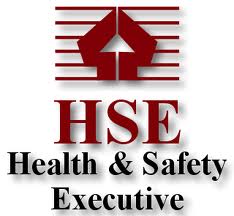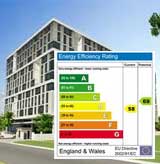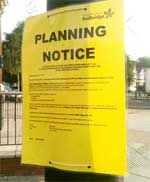
The Workplace (Health, Safety and Welfare) Regulations 1992 cover a wide range of basic health, safety and welfare issues and apply to most workplaces. This guide is based on extracts from the governments “Workplace health, safety and welfare – A short guide for managers” and it summarises the regulations and the amendments issues since 1992.
Requirements under these Regulations
The regulations say that if you are an employer, you have a general duty under section 2 of the Health and Safety at Work Act 1974 to ensure, so far as is reasonably practicable, the health, safety and welfare of your employees at work. You also have a duty of care towards people who are not their employees but use their premises.
Putting it simply, you have a responsibility to everyone (able and disabled) who is on your premises at anytime. Where necessary, parts of the workplace, including in particular doors, passage ways, stairs, showers, washbasins, lavatories and workstations, should be made accessible for disabled people.
Health Regulations
The measures outlined in this section contribute to the general working environment of people in the workplace.
Ventilation
Workplaces need to be adequately ventilated. Fresh, clean air should be drawn from outside the workplace, uncontaminated by discharges from flues, chimneys or other process outlets, and be circulated through the workrooms.
Ventilation should also remove and dilute warm, humid air and provide air movement which gives a sense of freshness without causing a draught. If the workplace contains process or heating equipment or other sources of dust, fumes or vapours, more fresh air will be needed to provide adequate ventilation. Windows or other openings may provide sufficient ventilation but, where necessary, mechanical ventilation systems should be provided and regularly maintained.
Indoor workplace temperatures
Environmental factors (such as humidity and sources of heat in the workplace) combine with personal factors (such as the clothing a worker is wearing and how physically demanding their work is) to influence what is called someone’s ‘thermal comfort’. Individual personal preference makes it difficult to specify a thermal environment which satisfies everyone. For workplaces where the activity is mainly sedentary, for example offices, the temperature should normally be at least 16 °C. If work involves physical effort it should be at least 13 °C.
Work in hot or cold environments
The risk to the health of workers increases as conditions move further away from those generally accepted as comfortable. Risk of heat stress arises, for example, from working in high air temperatures, exposure to high thermal radiation or high levels of humidity, such as those found in foundries, glass works and laundries. Cold stress may arise, for example, from working in cold stores, food preparation areas and in the open air during winter.
Assessment of the risk to workers’ health from working in either a hot or cold environment needs to consider both personal and environmental factors. Personal factors include body activity, the amount and type of clothing, and duration of exposure. Environmental factors include ambient temperature and radiant heat; and if the work is outside, sunlight, wind velocity and the presence of rain or snow.
Lighting
Lighting should be sufficient to enable people to work and move about safely. If necessary, local lighting should be provided at individual workstations and at places of particular risk such as crossing points on traffic routes. Lighting and light fittings should not create any hazard. Automatic emergency lighting, powered by an independent source, should be provided where sudden loss of light would create a risk.
Cleanliness and waste materials
Every workplace and the furniture, furnishings and fittings should be kept clean and it should be possible to keep the surfaces of floors, walls and ceilings clean. Cleaning and the removal of waste should be carried out as necessary by an effective method. Waste should be stored in suitable receptacles.
Room dimensions and space
Workrooms should have enough free space to allow people to move about with ease. The volume of the room when empty, divided by the number of people normally working in it, should be at least 11 cubic metres. All or part of a room over 3.0 m high should be counted as 3.0 m high. 11 cubic metres per person is a minimum and may be insufficient depending on the layout, contents and the nature of the work.
Workstations and seating
Workstations should be suitable for the people using them and for the work they do. People should be able to leave workstations swiftly in an emergency. If work can or must be done sitting, seats which are suitable for the people using them and for the work they do should be provided. Seating should give adequate support for the lower back, and footrests should be provided for workers who cannot place their feet flat on the floor.
Safety Regulations
Maintenance
The workplace, and certain equipment, devices and systems should be maintained in efficient working order (efficient for health, safety and welfare). Such maintenance is required for mechanical ventilation systems; equipment and devices which would cause a risk to health, safety or welfare if a fault occurred; and equipment and devices intended to prevent or reduce hazard.
Floors and traffic routes
‘Traffic route’ means a route for pedestrian traffic, vehicles, or both, and includes any stairs, fixed ladder, doorway, gateway, loading bay or ramp.
Falls into dangerous substances
The consequences of falling into dangerous substances are so serious that a high standard of protection is required. Dangerous substances in tanks, pits or other structures should be securely fenced or covered. Traffic routes associated with them should also be securely fenced.
Transparent or translucent doors, gates or walls and windows
Windows, transparent or translucent surfaces in walls, partitions, doors and gates should, where necessary for reasons of health and safety, be made of safety material or be protected against breakage. If there is a danger of people coming into contact with it, it should be marked or incorporate features to make it apparent.
Windows
Openable windows, skylights and ventilators should be capable of being opened, closed or adjusted safely and, when open, should not pose any undue risk to anyone. Windows and skylights should be designed so that they may be cleaned safely.
Doors and gates
Doors and gates should be suitably constructed and fitted with safety devices if necessary. Doors and gates which swing both ways and conventionally hinged doors on main traffic routes should have a transparent viewing panel. Power-operated doors and gates should have safety features to prevent people being struck or trapped and, where necessary, should have a readily identifiable and accessible control switch or device so that they can be stopped quickly in an emergency.
Escalators and moving walkways
Escalators and moving walkways should function safely, be equipped with any necessary safety devices, and be fitted with one or more emergency stop controls which are easily identifiable and readily accessible.
Welfare
Sanitary conveniences and washing facilities
Suitable and sufficient sanitary conveniences and washing facilities should be provided at readily accessible places. They and the rooms containing them should be kept clean and be adequately ventilated and lit. Washing facilities should have running hot and cold or warm water, soap and clean towels or other means of cleaning or drying.
Drinking water
An adequate supply of high-quality drinking water, with an upward drinking jet or suitable cups, should be provided. Water should only be provided in refillable enclosed containers where it cannot be obtained directly from a mains supply. The containers should be refilled at least daily (unless they are chilled water dispensers where the containers are returned to the supplier for refilling).
Accommodation for clothing and facilities for changing
Adequate, suitable and secure space should be provided to store workers’ own clothing and special clothing. As far as is reasonably practicable the facilities should allow for drying clothing. Changing facilities should also be provided for workers who change into special work clothing.
Facilities for rest and to eat meals
Suitable and sufficient, readily accessible rest facilities should be provided. Seats should be provided for workers to use during breaks. These should be in a place where personal protective equipment need not be worn. Rest areas or rooms should be large enough and have sufficient seats with backrests and tables for the number of workers likely to use them at any one time, including suitable access and seating which is adequate for the number of disabled people at work.
Where workers regularly eat meals at work, suitable and sufficient facilities should be provided for the purpose. Such facilities should also be provided where food would otherwise be likely to be contaminated. Work areas can be counted as rest areas and as eating facilities, provided they are adequately clean and there is a suitable surface on which to place food.







